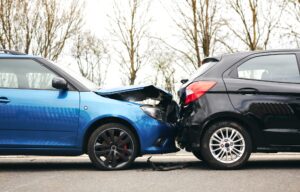Table of Contents
ToggleWhat Happens During the Pre-Litigation Phase of My Los Angeles Personal Injury Case?

The pre-litigation phase is a critical part of any personal injury case. It is during this time that the groundwork is laid for a successful outcome. This phase can be confusing and overwhelming, but understanding what happens during this period can help you better prepare for what lies ahead in your case.
1. Initial Consultation and Investigation
The pre-litigation phase typically begins with an initial consultation between the client and an attorney. During this meeting, the attorney will review the facts of the case, ask questions, and gather information to determine whether there is a valid legal claim to pursue. The attorney may also explain the legal process, possible outcomes, and their recommended strategy if the case were to proceed.
2. Gathering Information and Conducting Investigations
The pre-litigation also encompasses gathering and investigating all relevant information related to your case. This includes:
- Facts: Establishing the facts of the case is crucial. Your attorney will conduct interviews with you and any witnesses to determine the details of the incident.
- Medical records: In order to establish the severity of your injuries, your attorney will obtain and review your medical records. These records will help determine the extent of your injuries and the expenses you have incurred as a result.
- Employment records: If you have missed time from work due to your injuries, your attorney may need to review your employment records to establish the amount of lost wages you have suffered.
- Police reports: If a police report was filed in relation to the incident, your attorney will want to review this report to gain an understanding of the details of the accident as well as any potential citations or violations that may have occurred.
This phase can reveal critical evidence necessary to establish your claim.
3. Sending a Demand Letter
Once your attorney has gathered all of the necessary information and evidence, they will draft a demand letter to be sent to the at-fault party’s insurance company. This letter will outline the extent of your injuries and damages and put the insurance company on notice that you are seeking compensation for your losses.
The demand letter will typically include, but is not limited to, the following:
- A description of the accident and the injuries sustained
- A list of any medical expenses incurred as a result of the accident
- Any lost wages or other financial damages
- A demand for a specific monetary amount in compensation
A thorough settlement demand letter can get your case off to a successful start.
4. Settlement Negotiations
After the demand letter has been sent, settlement negotiations will usually commence between the involved parties. The goal of these negotiations is to reach an agreement on the amount of compensation to be awarded without having to go through the lengthy and costly process of trial.
Some cases may also go through alternative dispute resolution methods, such as mediation or arbitration, in order to reach a settlement.
Mediation
Mediation is a voluntary and confidential process where a neutral third party, also known as a mediator, facilitates discussion between the parties in order to help them reach a resolution. The mediator cannot decide for the parties but can offer guidance and help them find common ground.
Arbitration
Arbitration, on the other hand, is a more formal process where impartial arbitrators hear both sides of the dispute and issue a binding decision. While it is generally quicker and cheaper than litigation, the parties lose control over the outcome and must accept the arbitrator’s decision.
5. Making the Decision To Litigate
There comes a point in the pre-litigation process when both parties must decide if they’re willing to take the case to court. Factors that influence this decision may include:
- Strength of each party’s case: Based on the evidence gathered and the legal arguments presented, attorneys and clients must assess their chances of success in court. This evaluation can help them decide if litigation is a viable choice.
- Financial considerations: The costs of litigation can be substantial. Both parties must consider whether they can afford these expenses, weigh them against the potential outcome of the case, and decide accordingly.
- Timeframe: Litigation can stretch over months, even years. The parties must consider if they are willing to devote the necessary time and resources toward taking the case to trial.
- Impact on reputation: For businesses, the decision to litigate can bring public attention that may damage their reputation. Balancing the potential harm to a business’s image against the benefits of litigation is an essential factor in the decision-making process.
Realistically speaking, the vast majority of personal injury cases will not make it all the way to court, let alone trial. However, keeping litigation as an option can increase your bargaining power significantly and could persuade the at-fault party to offer a more reasonable settlement amount.
Learn About Your Legal Options by Contacting a Qualified Los Angeles Personal Injury Lawyer
The pre-litigation phase is one of the most important steps a personal injury case will go through. An experienced Los Angeles personal injury attorney can protect your rights and interests throughout the process. Since most lawyers in the personal injury field work for a contingency fee, you’ll only have to pay them attorney’s fees if they secure compensation for you.
Contact Our Car Accident Law Firm in Los Angeles, CA
If you were injured in an accident in Los Angeles, CA or you lost a loved one and you need legal assistance, please contact us to schedule a free consultation. One of our Los Angeles car accident lawyers at M&Y Personal Injury Lawyers will get in touch with you soon.
M&Y Personal Injury Lawyers – Los Angeles Office
4929 Wilshire Blvd Suite 960,
Los Angeles, CA 90010
866-864-5477
M&Y Personal Injury Lawyers – Downtown Office
350 S Figueroa St Suite 276
Los Angeles, CA 90071
(877) 751-8953




